#InternetofThings(IoT)
Explore tagged Tumblr posts
Text
#hashtag#IoT hashtag#AssetMonintoring hashtag#InternetofThings hashtag#IoTHub hashtag#IoTCentral hashtag#IoTSuite hashtag#AzureIoT hashtag#DigitalTransformation hashtag#IoTinManufacturing hashtag#PredictiveMaintenance hashtag#StridelySolutions
2 notes
·
View notes
Text
Build an IoT project, the easy way! 🔌💡🌐
WipperSnapper is a firmware designed to turn any WiFi-capable board into an Internet-of-Things device without programming a single line of code.
#adafruit#iot#wippersnapper#internetofthings#firmware#wifi#nocode#lowcode#diy#smartdevices#easypeasy#wireless#techinnovation#plugandplay#projectguide#hasslefree#makeiteasy#iotmagic
16 notes
·
View notes
Text

AR or Augmented Reality and VR or Virtual Reality are the technical inventions that help live our imaginations before our eyes through simulations. AR/VR can be programmed with IoT objects to offer optimal audio-visual experiences that can rival or replicate a physical world without the help of any tangible media.
But, how to program these elements?
The popular programming languages help you build the simulations that bring AR/VR tech to life for the audience. Languages like C#, Python, JavaScript, JAVA, Swift, C++, Rust, and APIs like WebGL allow developers to build the right AR/VR for the users.
Are you willing to build AR/VR tech for your business? Hire Augmented Reality Developers or Virtual Reality Developers via Remote72.
#ar vr technology#augmented reality#virtual reality#app development#developer#programming#software engineering#software#ar vr development services#python#java#javascript#webgl#developers#iot#iot tech#internetofthings#technology#tech
2 notes
·
View notes
Text

Our smart touch switches redefine luxury with their sleek toughened glass design, seamlessly blending style and innovation.
Wait there is more! You can also control them with ease through the Smarden app for the ultimate comfort at your fingertips.
We are the best home automation company,
contact us for home automation in delhi, mumbai, chandigarh and chennai: +91 85698 06458
or Visit: www.smarden.in
#smart home automation#technology#smart home#home automation#home automation in delhi#home automation system#best home automation company in delhi#touch switches#smart touch switches#wifi touch switches#iot#internetofthings#interiordecor#realestate
2 notes
·
View notes
Text
Driving innovation with intelligent IoT: Imobisoft’s impact on connected systems
The digital revolution continues to shape the modern world, and at its core lies the Internet of Things (IoT). This transformative technology is enabling smarter decisions, automated operations, and seamless connectivity across industries. One company making a substantial impact in this domain is Imobisoft, delivering intelligent IoT solutions that redefine what’s possible in a connected ecosystem.
Seamless Integration Across the IoT Landscape
Imobisoft builds future-ready IoT ecosystems that span everything from sensor-level integration to cloud-based analytics. Their development framework emphasizes modularity, security, and speed to deployment, allowing clients to remain competitive in fast-moving markets.
Their expertise in crafting IoT solutions for specific use cases has helped clients across logistics, smart infrastructure, and consumer electronics. But one of the standout verticals for Imobisoft has been the automotive sector.
Driving Smart Mobility
As an automotive IoT software development company, Imobisoft is leading the charge in smart mobility. Their solutions enable real-time vehicle diagnostics, fleet tracking, infotainment systems, and advanced telematics – turning traditional vehicles into connected machines.
From electric vehicle ecosystems to autonomous driving support, Imobisoft's development strategies enhance safety, efficiency, and user experience on the road. With an increasing demand for intelligent transport systems, their work supports innovation that meets both consumer and regulatory expectations.
Why Partner with Imobisoft?
With a full-stack approach to IoT development, Imobisoft offers:
Custom-built IoT applications
Embedded systems design
Data analytics and visualization tools
Machine learning integration
Cloud-native scalability
Every project is guided by a user-first mentality, ensuring that the end result is intuitive, scalable, and impactful.
Shaping the Future of IoT
Imobisoft continues to push boundaries with its innovative, data-driven solutions. Their agile development processes and deep industry knowledge make them a reliable partner for organizations looking to embrace the next generation of connectivity.
By bridging the gap between software and hardware, and embedding intelligence into every layer, Imobisoft is shaping the connected future – one smart solution at a time.
#IoT#InternetOfThings#SmartTechnology#ConnectedDevices#AutomotiveIoT#IoTDevelopment#Imobisoft#SoftwareDevelopment#TechInnovation#AIandIoT#AutomotiveSoftware#SmartMobility
0 notes
Text
Quantum Kernel Methods In Quantum ML For IoT Data Analytics

IoT Data Prediction Improves with Quantum Machine Learning Kernels.
Quantum kernel techniques
Recent research examines how quantum computation could improve the processing and interpretation of the growing volume of data produced by networked IoT devices. Scientists are curious if quantum kernel approaches can improve machine learning tasks like categorising and forecasting data. The use of projected quantum kernels (PQKs) to classify IoT data has been extensively studied by Francesco D'Amore and colleagues.
Beyond kernel approaches, quantum machine learning
Machine learning has great opportunities and challenges as IoT data grows. The study team focused on constructing prediction models with a quantum algorithm-compatible dataset to tackle this. This method avoided the lengthy pre-processing needed to adapt classical datasets to quantum methods.
The study focused on quantum kernel approaches. Kernel approaches tackle problems by implicitly mapping information into a higher-dimensional space. The Projected Kernel (PQK) quantum algorithm encodes data into a Hilbert space, which represents all quantum system states. For analysis, this quantum form is projected onto classical space. This method uses quantum computational principles without data organised for quantum processing.
This study uses a real IoT dataset. Even though many quantum machine learning studies use fabricated or simplified data, realistic issues must be used to assess quantum approaches' applicability. The dataset, a representative sample of smart building data, contained sensor readings of office ambient conditions.
This dataset can also be used with quantum algorithms without complex dimensionality reduction. For better accuracy and processing efficiency, choose a directly compatible dataset. The research shows how these methods might improve smart building occupancy forecast accuracy, addressing a major difficulty in quantum machine learning: the lack of quantum-compatible datasets.
The study stressed proper feature maps. Feature maps are needed to efficiently encapsulate classical data from IoT devices for quantum computation. These maps transform raw data for machine learning. Feature map selection strongly impacts model performance and quantum algorithm data learning. The study examined how many feature maps encoded conventional IoT data into a quantum state to investigate how different encoding strategies affect learning and generalisation.
A PQK approach
Research team benchmarked PQK method extensively. They compared its performance to classical kernel methods and Support Vector Machines. Understanding the quantum technique's pros and cons and assessing its efficacy requires these comparisons. The results suggest that PQK may increase prediction performance, laying the groundwork for comparison with classical methods.
The study found that PQK improves IoT data prediction, although the researchers urged further research. Future research should focus on scaling these algorithms to handle larger and more complex datasets. PQK's noise resistance, a property of near-term quantum technology, must also be examined.
This quantum-inspired strategy will be tested by expanding IoT applications beyond smart buildings and comparing performance to deep neural networks.
The study “Assessing Projected Quantum Kernels for the Classification of IoT Data” describes these findings. Information is more accessible.
This study covers classical machine learning, dataset creation, feature maps, Hilbert space, IoT devices, Quantum kernel approaches, prediction models, projected kernel, quantum algorithms, and quantum machine learning. This work advances quantum machine learning by showing how quantum computing could transform many sectors.
#Quantumkernelmethods#Quantumkernel#Quantummachinelearning#IoT#machinelearning#SupportVectorMachines#InternetofThings#technology#technews#technologynews#news#govindhtech
1 note
·
View note
Text
Discover how the Internet of Things connects industries through smart sensors, wearables, and industrial automation solutions. Explore real-world applications in healthcare, agriculture, and smart cities. Stay updated on security challenges, 5G-enabled IoT advancements, and edge computing developments. Perfect for engineers, product managers, and tech-savvy consumers.
0 notes
Text
What are high-paying IoT job roles?
The Internet of Things (IoT) is one of the fastest-growing technological fields, creating numerous high-paying job opportunities. With businesses leveraging IoT for automation, smart devices, and data-driven decision-making, skilled professionals are in high demand.
Top High-Paying IoT Job Roles
IoT Solutions Architect – This role involves designing and implementing end-to-end IoT solutions. It requires expertise in cloud computing, networking, and security. IoT architects can earn between $120,000 to $160,000 annually.
IoT Security Specialist – Cybersecurity is a crucial concern in IoT networks. These specialists focus on protecting IoT devices and data from cyber threats, with salaries ranging from $110,000 to $150,000.
IoT Software Developer – Developers build applications for IoT devices, integrating hardware and software for seamless communication. Their salaries typically range between $90,000 and $140,000.
IoT Cloud Engineer – IoT devices generate vast amounts of data, requiring cloud-based solutions for storage and processing. IoT cloud engineers work with platforms like AWS, Azure, and Google Cloud, earning $100,000 to $145,000 per year.
IoT Data Scientist – Data scientists analyze IoT-generated data to derive insights for businesses. Strong skills in machine learning, AI, and big data tools can lead to salaries exceeding $120,000.
Embedded Systems Engineer – IoT devices rely on embedded systems for functionality. Engineers skilled in C, C++, and RTOS can earn between $85,000 and $130,000.
IoT Product Manager – They oversee the development of IoT products, bridging the gap between technical and business teams. Their salaries range from $110,000 to $150,000.
To enter this high-paying field, professionals can enhance their skills by enrolling in an Internet of Things Course.
#iot#internetofthings#iotsolutions#iot applications#iotmanagement#iot platform#technologynews#techinnovation#automation#digitaltransformation#embeddedsystems
0 notes
Text
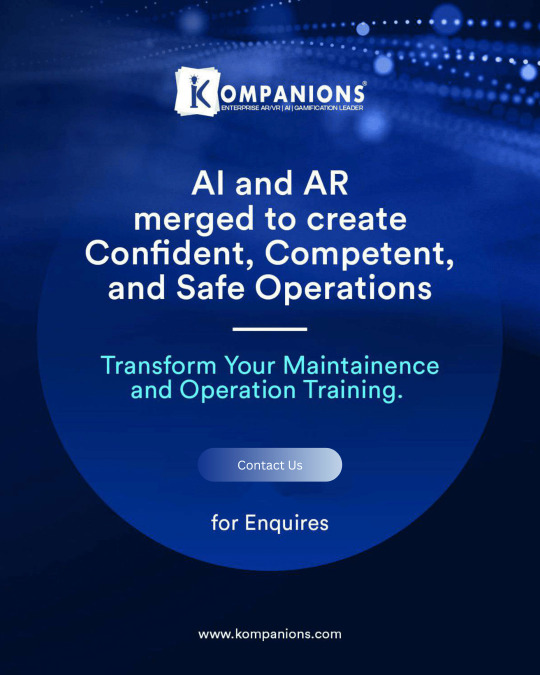
IoT in Manufacturing: Use Cases, Benefits and Examples
If there is any one industry that has been under relatively high pressure to adapt and evolve, that would have to be the manufacturing industry. Various businesses and companies are involved in this sector, leading to the production of different types and levels of products and goods.
1 note
·
View note
Text
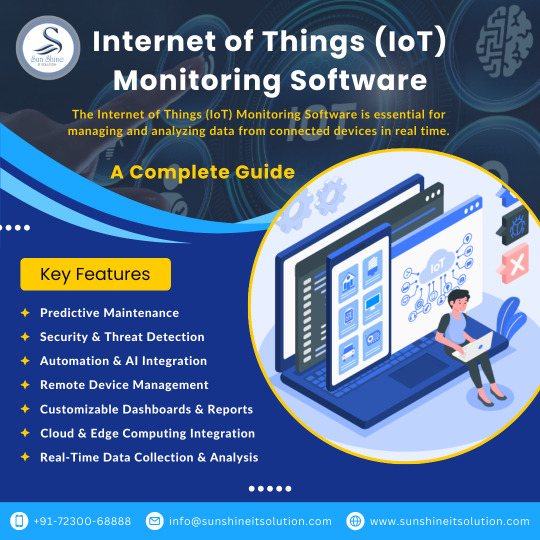
🌐 Unlock the Power of Connectivity with IoT Monitoring Software! 🚀
In a world where everything is getting smarter, businesses need IoT Monitoring Software to stay ahead. From real-time data tracking to predictive maintenance, IoT is revolutionizing industries by enhancing efficiency and reducing operational risks.
🔹 Key Benefits: ✔️ Real-Time Monitoring – Keep track of devices, assets, and operations 24/7. ✔️ Predictive Maintenance – Prevent failures before they happen. ✔️ Data-Driven Insights – Make smarter decisions with analytics. ✔️ Remote Accessibility – Control and monitor from anywhere. ✔️ Enhanced Security – Detect anomalies and threats instantly.
Please explore our YouTube channel for informative videos. Link :- https://www.youtube.com/@sunshineitsolutions
Contact Us :- https://wa.me/+91-7230068888
WhatsApp Channel ( Subscribe for more updates ) https://whatsapp.com/channel/0029Vb0QMGg0bIdggODhE22T
#IoT#InternetOfThings#SmartTechnology#IoTMonitoring#DigitalTransformation#BusinessGrowth#SunShineITSolution
0 notes
Link
0 notes
Text
IoT Platforms: The Backbone of Connectivity
IoT platforms are revolutionizing how businesses connect and manage smart devices. They simplify operations with device management, data analytics, and seamless integration while ensuring robust security.
Emerging trends like edge computing, AI integration, and 5G connectivity are pushing these platforms to new heights. At MeshTek, we create customized IoT solutions to help businesses thrive in this connected era.
Discover more at MeshTek’s IoT Services.
#IoT#InternetOfThings#Technology#Tech#Automation#Innovation#ArtificialIntelligence#AI#Cybersecurity#MachineLearning#Robotics#SmartHome#Electronics#HomeAutomation#BigData#DataScience#iot development services#iotnbo#web development#software development#bluetooth#iotsolutions#iot platform#iot applications
1 note
·
View note
Text
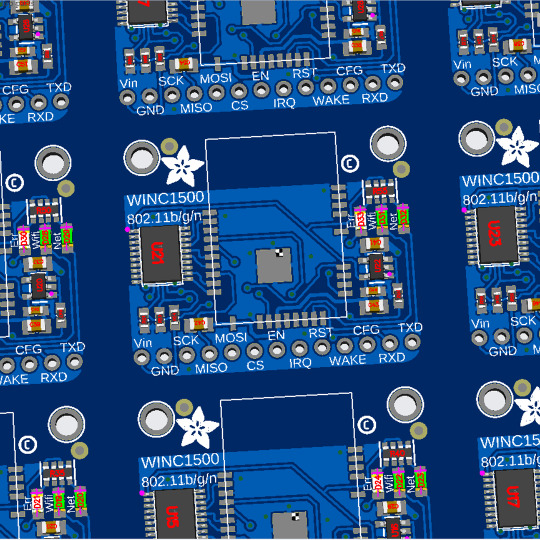

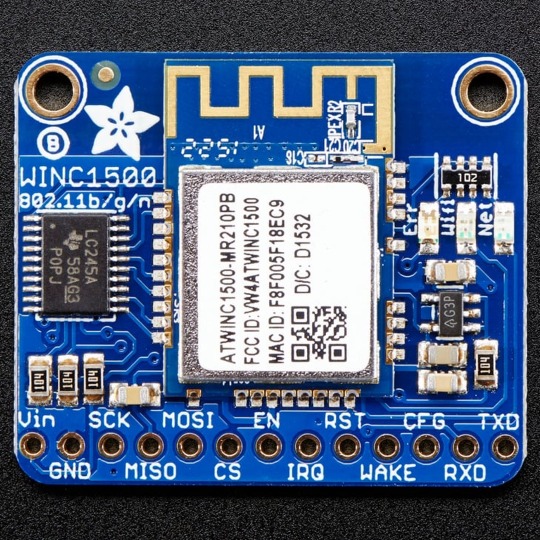
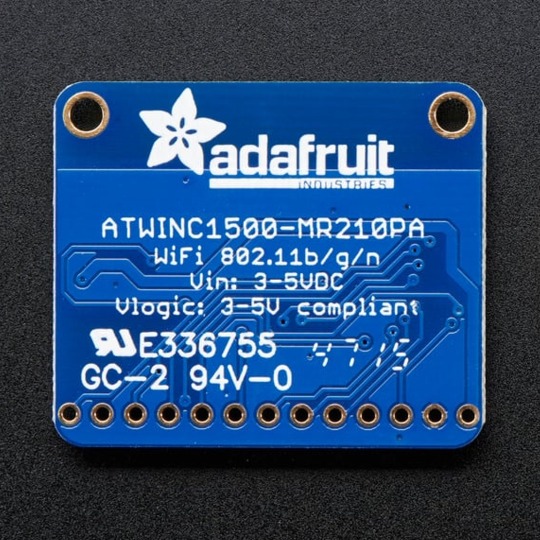
PCB of the Day! ATWINC1500 WiFi Breakout 🔌🌐🛠
Connect your development boards to the Internet with this fine WiFi module. This 802.11bgn-capable WiFi module is the best new thing for networking your devices, with SSL support and rock solid performance.
#adafruit#electronics#opensource#opensourcehardware#pcboftheday#pcb#wifi#arduino#internetofthings#iot#networking#tech#innovation#diy#maker#wireless
2 notes
·
View notes
Text
How does MQTT protocol optimize IoT communication?
MQTT (Message Queuing Telemetry Transport) is a lightweight messaging protocol designed to optimize communication in IoT (Internet of Things) environments. Its design prioritizes minimal bandwidth usage, low power consumption, and efficient message delivery, making it ideal for resource-constrained IoT devices.
Lightweight and Efficient: MQTT uses a simple publish/subscribe model, which reduces the complexity of device-to-device communication. Instead of devices directly communicating with each other, they interact via a broker, ensuring decoupled communication. This minimizes overhead and enables low-latency data exchange.
Reliable Communication: MQTT supports three levels of Quality of Service (QoS):
QoS 0: At most once (fire and forget).
QoS 1: At least once (guaranteed delivery).
QoS 2: Exactly once (ensures no duplication). These options allow developers to balance reliability and resource usage, depending on the application requirements.
Energy Efficiency: The protocol is designed for constrained devices and intermittent networks, with a "keep-alive" mechanism that maintains connections while consuming minimal power. Its ability to operate over TCP/IP ensures compatibility with existing network infrastructures.
Scalability: MQTT brokers can handle thousands of simultaneous connections, making it ideal for large-scale IoT deployments. Its hierarchical topic structure allows for organized and scalable communication.
Minimal Bandwidth Usage: MQTT messages are compact, with minimal headers, reducing network traffic. This is particularly beneficial in IoT systems with limited bandwidth or cost-sensitive cellular networks.
Incorporating MQTT in IoT projects facilitates seamless, efficient communication between devices and cloud systems. For those seeking expertise in such protocols, enrolling in an IoT certification course can provide the necessary skills to design robust and scalable IoT solutions leveraging MQTT.
0 notes
Text
What No One Tells You About Smart Switch Boards

Smart Switch Boards Are More Than Just “Convenient”
When you hear “smart switch boards,” the first thing that may come to mind is convenience — app control, voice commands, automation. But that’s only the surface. The real transformation happens in the way you live. Smart switch boards bring peace of mind, safety, and a smoother daily routine. They don’t just upgrade your walls, they upgrade your lifestyle.
No Tech Skills Required
Let’s address the biggest myth that is smart homes are not just for techies. SmarDen smart switch boards are designed to be incredibly simple to use. Kids can operate lights from the app. Seniors can use voice assistants. Guests can touch the sleek glass panels and feel the ease. Smart touch switches aren’t about complexity, they’re about comfort.
Your Home Stays Smart, Even Without WiFi
What if the internet goes down? No problem. Every SmarDen smart switch board continues to work through manual touch. You still get full functionality like a regular switch. And when WiFi resumes, all smart controls like the app and voice commands — come back online seamlessly. It’s a dual-mode experience built for Indian households.
You Save More Than You Think
Leaving fans, lights, or geysers on for hours adds up in your electricity bill and in unnecessary stress. With smart switches, you can schedule shut-offs, automate daily routines, and monitor usage. Over time, smart switch boards save more energy than you’d expect. So while it feels like a premium upgrade, it’s actually a long-term smart investment.
No Need to Break Tiles or Rewire Walls
One of the best things no one tells you about smart switch boards? They’re retrofit-ready. That means you can install them in any home, new or old without hacking walls or laying new wires. It’s a hassle-free upgrade that doesn’t mess with your interior, making it ideal for apartments, villas, and even commercial spaces.
It Looks Like Luxury — Because It Is
Traditional white switch plates age fast. They crack, yellow, and ruin the look of a freshly designed room. SmarDen’s smart switch boards come in stunning glass or acrylic finishes, in 2 | 4 | 6 | 8 | 12 module configurations. Whether you’re designing a modern living room or a minimalist kitchen, these boards elevate your interior with a sleek, futuristic look.
It’s Not About Switching — It’s About Living
The real shift isn’t in how you turn on a light. It’s in how you feel when your home does it for you. A warm room when you wake up. Lights that dim at night. A fan that shuts off 10 minutes after you leave. These small automations reduce friction and let you focus on the moments that matter. That’s the emotional side of smart living — and no one tells you about it.
Built to Grow With Your Life
SmarDen’s smart switch boards aren’t just a one-time setup. They’re modular and scalable. Start with a single room. Add more boards over time. Expand features as your needs grow. Whether you’re a homeowner, renter, or builder, this flexibility makes SmarDen the go-to home automation company in India for every stage of your life.
FAQs: Everything You Wanted to Ask
Q1: Are smart switch boards child-safe and elder-friendly? Yes. They are shockproof, spark-free, and easy to operate by touch, app, or voice.
Q2: Can I install these in my existing home? Absolutely. SmarDen boards are designed for retrofit installation — no damage to walls or wiring.
Q3: What if the WiFi connection is lost? Manual touch still works perfectly. Smart features resume automatically once WiFi is back.
Q4: What finishes and sizes are available? We offer only glass and acrylic finishes, in 2 | 4 | 6 | 8 | 12 module variants. No matte options.
Q5: Can I automate schedules with SmarDen boards? Yes. You can schedule your lights, fans, ACs, geysers, and more using the SmarDen app or voice commands.
Looking for More Smart Home Options?
SmarDen doesn’t just offer smart switch boards — we also provide a full range of automation products, including WiFi touch switches and touch switch boards that blend functionality with aesthetics.
As one of the best home automation companies in India, SmarDen is trusted by thousands of homeowners for reliability, innovation, and simplicity.
If you’re searching for a home automation company near me, look no further. Whether you’re upgrading a single room or designing an entire smart villa, SmarDen has the solutions tailored for your needs.
Final Word: What You Don’t See, You’ll Feel
The best upgrades are the ones that quietly improve your life. Smart switch boards don’t scream for attention — they blend in, simplify your routine, and give you control in ways you never knew you needed. Once you experience the change, there’s no going back.
Recognized by homeowners and builders alike, SmarDen is fast becoming the best home automation company in India — known for its seamless technology, elegant design, and retrofit-friendly smart switch boards.
Ready to upgrade your home?
📞 Contact us at www.smarden.in 📲 Or DM us for a personalized consultation on instagram.
Your home deserves to be as smart as you are.
#smarden#iot#technology#internetofthings#smart home automation#smart home#home automation#home automation in delhi#home automation system#best home automation company in delhi
0 notes
Text
#1194 What is the IoT?


What is the IoT? The IoT is the Internet of Things, and it refers to all of the physical objects that are connected to the Internet. The term Internet of Things was coined in 1999 by a computer scientist called Kevin Ashton. He had been tasked by Proctor & Gamble to come up with a way to optimize their supply chain. He wanted to put radio-frequency identification (RFID) chips in the labels of their products to track them all through the supply train. Then, using this information, they could work out where improvements needed to be made. He used Internet of Things as the title of his presentation to get the idea for RFID chips passed by the board at Proctor & Gamble. Ashton felt that RFID chips would be vital for the Internet of Things because tracking the movement of things would be vital. Inventory is still a huge part of the IoT, but a lot of it is done with barcodes and QR codes these days. At the time, not a lot of devices were connected and the term IoT was used by companies to refer to their supply chain tracking systems. It was only after 2010 that the term started to be used for other connected devices. The first connected device was a vending machine at Stanford Artificial Intelligence Laboratory, connected in 1972. It was connected to a computer terminal that allowed it to sell through credit, a novel idea at the time. In 1982, students connected another vending machine to a computer network at Carnegie Mellon University. They could check its inventory and temperature online. The vending machine was only connected to the university network to begin with but became the first device connected to the early Internet. Since then, the number of devices connected to the Internet has increased almost exponentially. We have experiences with IoT devices every day. Many of us have smart home systems in our houses. Amazon’s Alexa or Google’s Nest, for example. These devices let you control any other connected device in your home, just by talking to them. You can turn your lights on, run a bath, see who is at the door, and a whole host of other functions. These smart devices also encapsulate machine learning so that they can learn your preferences and help you more accurately. Every time you use one of them, the data gets sent back to the company, where it is analyzed by computers. Over time, the devices will learn your preferences and possibly perform actions before you even ask for them. Smart fridges are also quite common these days. They know what food they have inside and can offer you recipe ideas. They can remind you when you have run out of something. There will be a point, probably quite soon, where your fridge can order you milk and groceries without even consulting you. We also experience IoT systems outside our houses daily and we wouldn’t be able to have a normal life without them. If you drive to work, the traffic lights are probably networked and programmed to adjust to traffic conditions. The streetlights will be connected and programmed to dim based on the sunlight. If you take the subway, the trains will be networked, so that it is known where they are. Some countries have driverless subway trains, which must be networked. When you buy a ticket or scan your ticket, you are using an IoT connected device. Your office will have security cameras that are networked, heating systems or cooling systems that are networked, and possibly smart energy meters. And if, like me, you have a smartphone and a smartwatch, you are carrying the IoT with you at all times. If you go shopping, the shop will have smart energy systems, the stock will be monitored by computer, and when you pay by credit card, you are relying on the IoT to pay the charge for you. The IoT is everywhere and we could not live without it. There are several risks that come from the IoT. The first is obviously hacking or viruses. If somebody can hack into an IoT network, for example, one controlling driverless cars, who knows what damage they could do. However, there is probably less risk from a system like that because it would be heavily protected. There is probably a far higher risk from all of the cheap Internet connected devices that are being produced in countries like China. These devices are cheap, designed to be thrown away when they break, and have absolutely no security. A vast percentage of the IoT is made up of devices like this. And this is what I learned today. Try these: - #674 Are ants smart? - #547 How is the Internet connected between countries? - #1183 What is a mycorrhizal network? - #789 Do the three laws of robotics need updating? - #822 Will we ever end up with just one language? Sources https://www.smartdatacollective.com/how-machine-learning-is-used-in-smart-home-automation/ https://en.wikipedia.org/wiki/Internet_of_things https://www.ibm.com/think/topics/internet-of-things https://www.dataversity.net/brief-history-internet-things/ https://www.visionofhumanity.org/what-is-the-internet-of-things/ https://www.verdict.co.uk/history-of-iot/?cf-view https://en.wikipedia.org/wiki/Radio-frequency_identification https://www.deepseadev.com/en/blog/examples-of-iot-in-daily-life https://en.wikipedia.org/wiki/List_of_driverless_train_systems Photo by Jakub Zerdzicki: https://www.pexels.com/photo/smart-home-devices-18485666/ Read the full article
0 notes